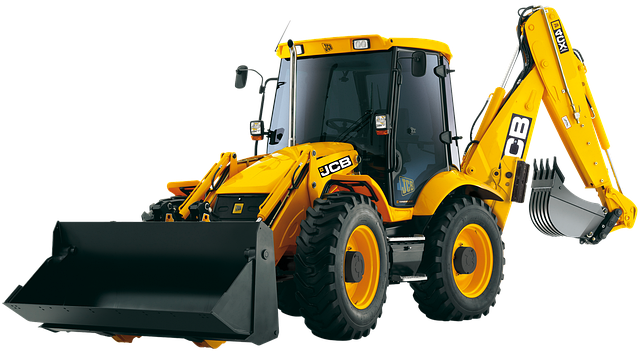Air circulation is crucial for maximizing heating system efficiency in large industrial spaces like warehouses, where unit heaters with forced air technology are transforming heating. These high-velocity heaters offer superior BTU capacity and even temperature distribution compared to traditional methods, enhancing comfort, reducing operational costs, and boosting productivity. Ceiling-mounted designs optimize airflow and provide quick response times. Case studies show their effectiveness in warehouse and commercial settings, significantly improving air circulation efficiency.
In the quest for efficient and effective heating solutions, high-velocity unit heaters are emerging as game-changers. This technology optimizes air circulation, addressing a key factor often overlooked in traditional heating systems. By understanding the impact of air flow on heat distribution, these advanced heaters offer unparalleled performance.
This article delves into the science behind high-velocity unit heaters, explores their advantages across various settings, and presents compelling case studies, illuminating why they’re becoming the preferred choice for optimal heating and improved indoor comfort.
- Understanding Air Circulation and Its Impact on Heating Systems
- Traditional Heaters vs. High-Velocity Unit Heaters: A Comparison
- The Science Behind High-Velocity Technology in Unit Heaters
- Benefits of Implementing High-Velocity Unit Heaters in Different Environments
- Case Studies: Success Stories of High-Velocity Unit Heaters in Action
Understanding Air Circulation and Its Impact on Heating Systems

Air circulation plays a pivotal role in the efficiency and performance of heating systems, especially in large industrial spaces like warehouses. Understanding how air moves and is distributed within a space is crucial when optimizing heating processes. In commercial heating applications, efficient air circulation ensures that heat reaches every corner, eliminating cold spots and maximizing comfort for occupants. This is particularly important for unit heaters, which are commonly used in various settings, from industrial spaces to commercial buildings.
Effective air circulation enhances the overall effectiveness of heating systems by ensuring that the generated heat is evenly dispersed. In the case of ceiling-mounted suspended heaters or gas fired units, proper airflow ensures that warm air reaches all areas, including hard-to-reach corners and elevated spaces. Electric heaters also benefit from optimized air movement, as it helps to prevent localized temperature variations and promotes a more uniform heating experience across the entire space. This is particularly beneficial in BTU capacity-focused systems where efficient circulation can significantly impact energy usage and operational costs in warehouse applications.
Traditional Heaters vs. High-Velocity Unit Heaters: A Comparison

Traditional heaters have long been the go-to solution for warming commercial and industrial spaces, including warehouses. However, they often fall short in terms of efficient air circulation and overall heating performance. High-velocity unit heaters, on the other hand, are transforming the way we heat large areas like warehouses and industrial spaces.
These advanced systems offer superior heating capabilities compared to conventional suspended heaters, gas fired units, or electric heaters. By delivering a higher BTU capacity and implementing forced air heating, high-velocity unit heaters ensure even temperature distribution throughout the entire space. Unlike ceiling-mounted heaters that can leave some areas less warmed, these innovative devices provide spotless, thorough heating solutions. This makes them ideal for various applications, from maintaining optimal conditions in busy warehouse environments to ensuring worker comfort in large industrial spaces.
The Science Behind High-Velocity Technology in Unit Heaters

The high-velocity unit heater technology revolutionizes forced air heating in industrial spaces like warehouses and commercial buildings. Unlike traditional suspended heaters or gas fired units that spread heat gradually, these advanced systems utilize powerful fans to force hot air through the space rapidly. This dynamic approach significantly enhances heating efficiency, ensuring even temperature distribution throughout vast industrial areas.
Electric heaters with high BTU capacity play a pivotal role in this process, offering precise control and quick response times. Ceiling-mounted configurations optimize airflow patterns, making them ideal for various applications. By employing forced air heating methods, these innovative unit heaters streamline the overall heating process, reducing energy consumption and operational costs in commercial and industrial settings.
Benefits of Implementing High-Velocity Unit Heaters in Different Environments

Implementing high-velocity unit heaters in various environments offers numerous benefits. These efficient heating solutions are particularly advantageous in industrial spaces, commercial heating applications, and warehouse settings where maintaining optimal air circulation is paramount. High-velocity unit heaters, such as gas fired units or electric heaters, provide powerful forced air heating with a superior BTU capacity, ensuring quick and uniform temperature regulation.
Their ceiling-mounted design makes them ideal for industrial spaces and large warehouses, where suspended heaters might be less practical. These heaters enhance overall comfort and productivity by circulating warm air evenly throughout the area, eliminating cold spots often associated with traditional heating systems. Moreover, their compact size and flexibility allow for easy installation and maintenance, making them a reliable choice for modern commercial heating needs.
Case Studies: Success Stories of High-Velocity Unit Heaters in Action

In various industrial settings, high-velocity unit heaters have proven to be game-changers in enhancing air circulation efficiency. Case studies highlight their remarkable success in warehouse applications and commercial heating scenarios. For instance, a recent implementation in an extensive industrial space saw a significant improvement in BTU capacity, thanks to the efficient forced air heating provided by these units. The ceiling-mounted gas fired units offered precise temperature control, making them ideal for diverse heating systems.
Another compelling story involves a bustling warehouse that struggled with circulation issues. By integrating high-velocity unit heaters, they achieved better air distribution, reducing cold spots and enhancing overall comfort. Electric heaters, suspended strategically, also contributed to this transformation, demonstrating the versatility of these solutions across various environments, from industrial spaces to commercial heating demands.
High-velocity unit heaters are transforming heating systems by enhancing air circulation efficiency, offering a game-changing solution for various environments. By leveraging advanced technology, these heaters provide faster and more effective heating compared to traditional models. Through case studies, it’s evident that their implementation leads to improved energy efficiency, reduced operational costs, and better overall comfort. As the demand for efficient heating solutions grows, high-velocity unit heaters are poised to become an indispensable tool in today’s digital era, ensuring optimal air circulation and comfortable indoor environments.
